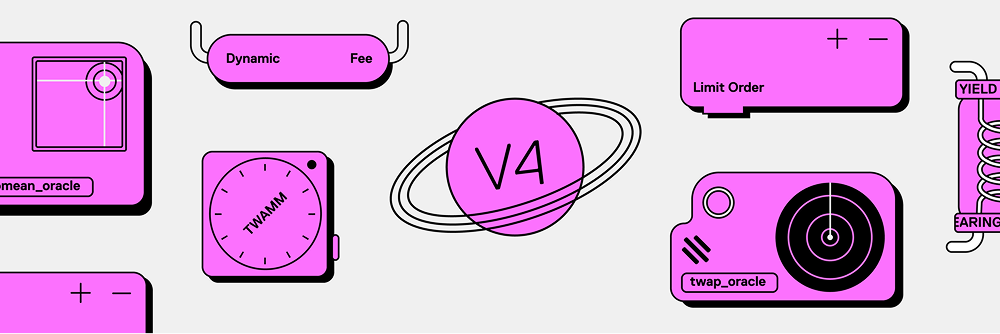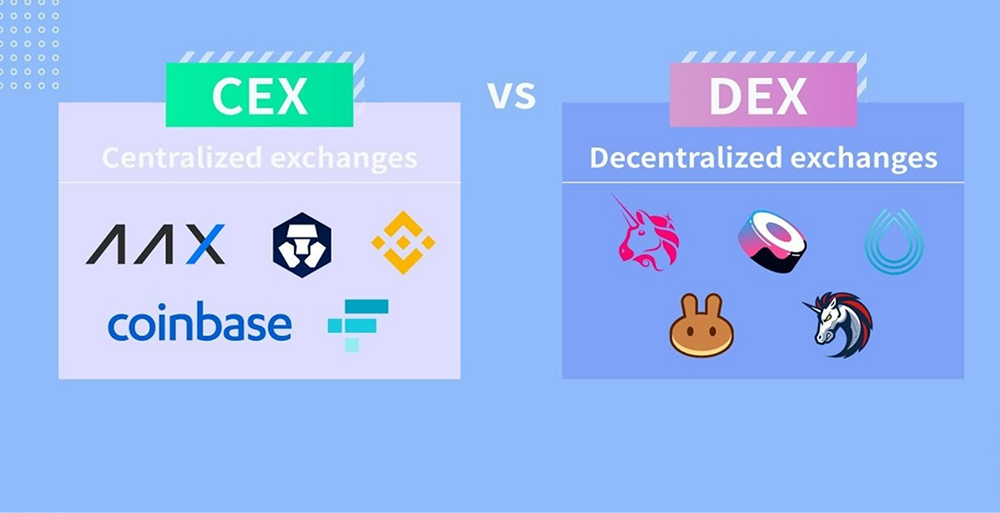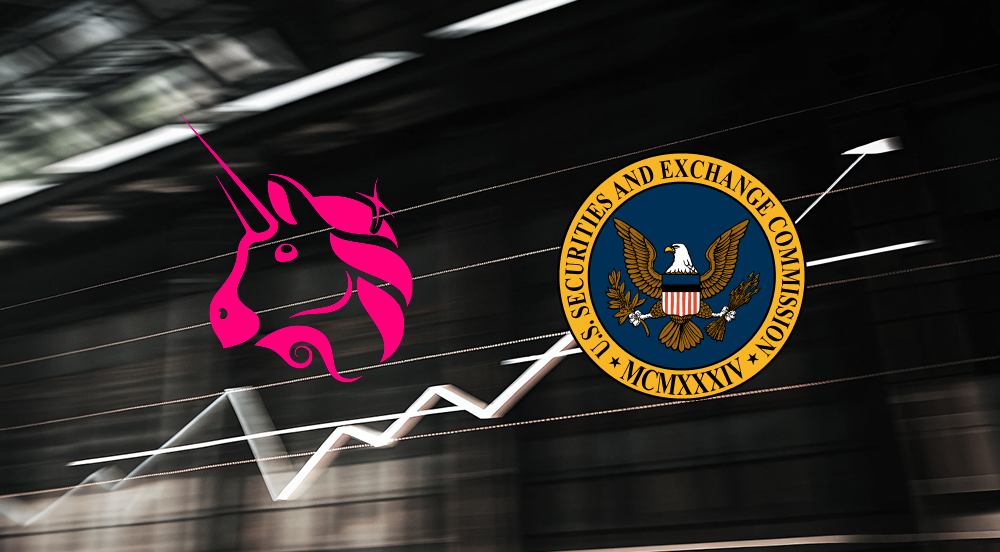Uniswap V4 has officially launched, marking a new development stage for the world's largest decentralized trading protocol (DEX). As an important infrastructure for decentralized finance (DeFi), Uniswap not only redefines on-chain trading models but also has a profound impact on the liquidity ecosystem of the crypto market, automated market maker (AMM) mechanisms, and the landscape of centralized exchanges (CEX).
1. Core Upgrades of Uniswap V4: Hooks Mechanism and Lower Gas Fees
One of the biggest highlights of Uniswap V4 is the introduction of the "Hooks" mechanism, a programmable AMM trading framework that makes liquidity management more flexible. Compared to version V3, V4 mainly brings the following technical upgrades:
1. Hooks Mechanism: A Milestone in Programmable AMM Trading
Hooks allow developers to execute custom logic at different stages of the trading lifecycle (such as before, during, and after a trade). For example, liquidity providers can create dynamic fee structures, execute on-chain strategies, and even introduce more complex risk control mechanisms. This means that Uniswap V4 is no longer just a fixed liquidity market but a highly flexible trading protocol.
Impact:
- Improved capital efficiency: Liquidity providers can manage funds more precisely, increasing capital utilization.
- Enhanced protocol scalability: Developers can customize new features based on market demand, improving the adaptability of the DeFi ecosystem.
- Optimized arbitrage and automated strategies: More flexible parameter adjustments allow traders to design more complex arbitrage and hedging strategies, enhancing market efficiency.
2. Unified Liquidity Pool (Singleton Pool): Reducing Gas Fee Costs
V4 introduces the "Singleton Pool" architecture, integrating multiple trading pools into a single smart contract, significantly reducing Gas fees. Compared to version V3, Gas fees are expected to decrease by over 50%.
Impact:
- Improved user experience: Lower trading costs attract more users to use Uniswap instead of CEX.
- Promoting DeFi ecosystem development: Lower Layer 1 on-chain transaction fees make small transactions more feasible, further promoting DeFi adoption.
- Enhanced on-chain liquidity: More trading activities will flow back to the mainnet, increasing the activity of the Ethereum mainnet.
3. Integration with L2 Ecosystem: Deep Compatibility with Optimism, Arbitrum, and Base
Uniswap V4 will deeply integrate with multiple Layer 2 solutions, such as Optimism, Arbitrum, and Base (Coinbase's Layer 2).
Impact:
- Increased transaction throughput: Layer 2 technology can support higher TPS, allowing Uniswap to handle larger transaction volumes.
- Reduced transaction latency: Faster block confirmation times improve the trading experience.
- Lower transaction costs: Combined with L2 Rollup mechanisms, Gas fees may further decrease to around $0.01.

2. The Impact of Uniswap V4 on Market Competition
The upgrade of Uniswap V4 is not only a technical advancement but also has a significant impact on the market landscape, especially in the competition among CEX, DEX, and Layer 2 ecosystems.
Uniswap V4 vs. CEX: Can Decentralized Trading Challenge Binance?
Although CEX (such as Binance and Coinbase) still has advantages in user experience, liquidity, and compliance, the Gas fee optimization and Hooks mechanism of Uniswap V4 may bring the DEX trading experience closer to that of CEX.
Potential challenges:
- Liquidity depth: Although Uniswap offers lower trading costs, CEX still controls larger liquidity pools.
- User experience: CEX transactions are faster and support fiat trading, while DEX still requires wallet connections, which have a higher barrier to entry.
- Compliance pressure: CEX is gradually becoming compliant, while DeFi remains in a gray area and may face stricter regulations.
However, the upgrade of Uniswap V4 lowers the entry barrier for DEX users and makes high-frequency trading and market-making strategies more flexible. This may attract some professional traders to shift to on-chain trading, thereby diverting some CEX users.

Uniswap V4 vs. Other DEX: How Will Curve and Balancer Respond?
Uniswap has long been a leader in the DeFi space, but the upgrade to V4 may further strengthen its market position, squeezing the survival space of other DEX.
Projects that may be affected:
- Curve Finance (CRV): Primarily focused on stablecoin trading, the low Gas fees of Uniswap V4 may capture some of Curve's trading share.
- Balancer (BAL): Multi-asset pool strategies may lose competitiveness under V4's Hooks mechanism.
- SushiSwap (SUSHI): There is a high functional overlap with Uniswap V4, and its market share may be further compressed.

3. Regulatory Challenges: The Path to Compliance for the Future of DeFi
The technical upgrades of Uniswap V4 may attract the attention of regulatory agencies in the future, especially regarding anti-money laundering (AML), user identity verification (KYC), and securities compliance.
Key regulatory challenges:
- Is DeFi considered a securities transaction? The U.S. SEC is still reviewing DeFi protocols, and if the trading structure of Uniswap V4 is deemed a security, it may face compliance pressure.
- AML and KYC requirements: The EU MiCA regulations have proposed stricter KYC rules for DeFi, and Uniswap may need to introduce compliance layers in the future.
- Smart contract liability issues: The Hooks mechanism allows developers to customize AMM logic, which may introduce new vulnerabilities and contract attack risks, leading to tighter DeFi regulations.

4. The Actual Impact of Uniswap V4 on Users: The Rise of High-Frequency Trading and NFT Trading
The upgrade of Uniswap V4 not only affects DeFi traders but may also promote high-frequency trading (HFT), NFT trading, and the entry of institutional funds.
The Rise of High-Frequency Trading (HFT) in the DeFi Era
With lower Gas fees, arbitrage traders can conduct cross-pool arbitrage more frequently, enhancing overall market efficiency. The Hooks mechanism also allows market makers to deploy more complex automated trading strategies, making Uniswap V4 more attractive to institutions.
New Opportunities in the NFT Trading Market
The Hooks mechanism of Uniswap V4 enables more efficient dynamic pricing for NFT trading. This means NFTs may be traded in an AMM format, thereby enhancing the liquidity of on-chain NFT trading.
Will Institutional Investors Accelerate Their Entry into DeFi?
As Layer 2 technology matures and the costs of the DeFi ecosystem decrease, institutional investors may be more inclined to enter Uniswap V4 for on-chain trading rather than relying on centralized exchanges.
Uniswap V4 Will Reshape DeFi Trading Models
Uniswap V4 is not only an important technical upgrade in the DeFi space but may also have a profound impact on the global trading market. From reducing Gas fees and introducing the Hooks mechanism to deeply integrating with the Layer 2 ecosystem, version V4 opens up broader development space for decentralized trading. Although CEX still controls the mainstream market and regulatory risks remain, the innovations of Uniswap V4 will undoubtedly further push DeFi towards the mainstream. In the future, we may witness the arrival of a more efficient, decentralized, and intelligent global financial system.
If you have any questions, you can contact us through the following official channels:
AiCoin Official Website: www.aicoin.com
Telegram: t.me/aicoincn
Twitter: x.com/AiCoinzh
Email: support@aicoin.com
Group Chat: Customer Service Yingying, Customer Service KK
免责声明:本文章仅代表作者个人观点,不代表本平台的立场和观点。本文章仅供信息分享,不构成对任何人的任何投资建议。用户与作者之间的任何争议,与本平台无关。如网页中刊载的文章或图片涉及侵权,请提供相关的权利证明和身份证明发送邮件到support@aicoin.com,本平台相关工作人员将会进行核查。




